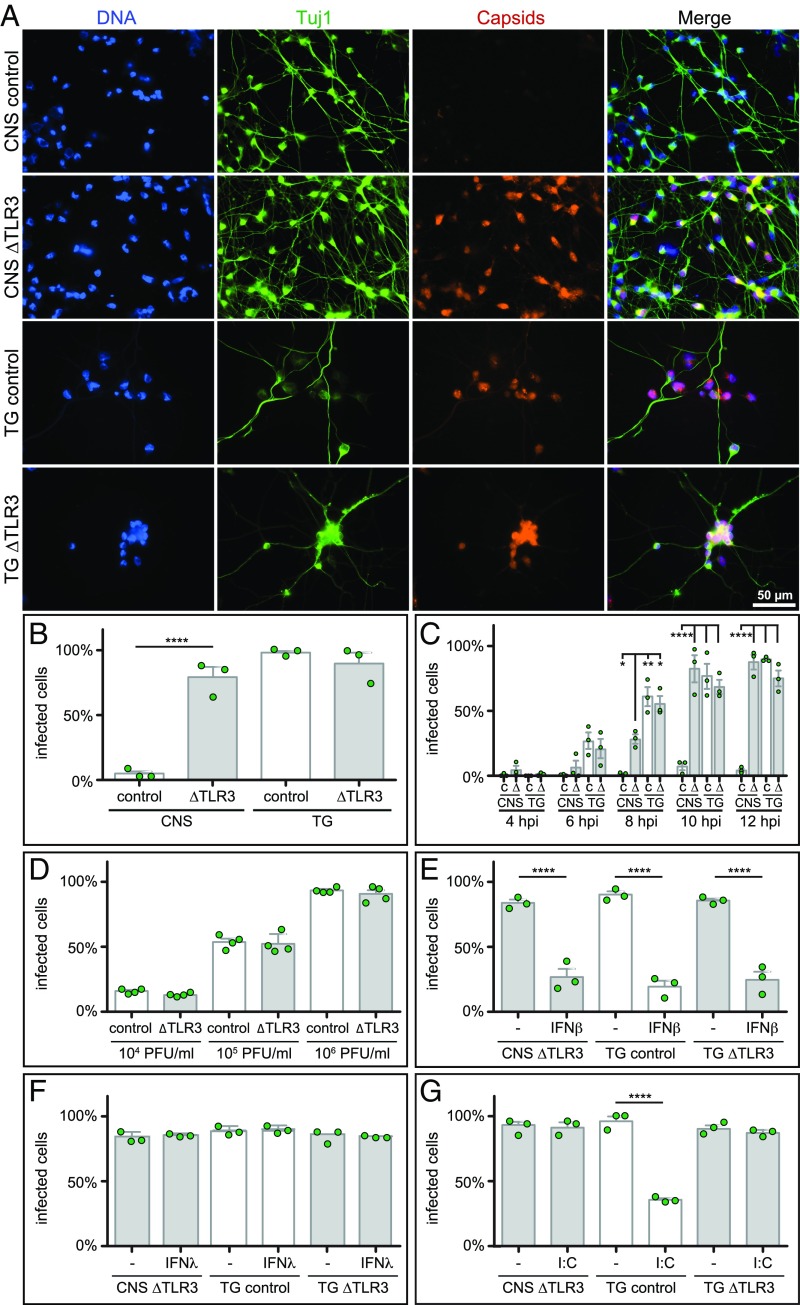Fig. 2.
CNS and PNS neuron susceptibility parallels natural human infections and is restricted by IFN and a TLR3 agonist. (A) Representative images of HSV-1 infection in control and AR patient (∆TLR3) iPSC-derived neurons. Cells were infected with 5 × 106 plaque-forming units (PFU) of HSV-1 strain F encoding a pUL25/mCherry capsid reporter for 20 h before fixation and staining for chromosomes (DAPI) and a neuron-specific tubulin isoform (Tuj1). (B) Percentage of infected Tuj1+ cells based on fluorescent capsid expression at 20-h postinfection, as in A. (C) Percentage of infected control (C) and AR patient (∆) iPSC-derived CNS and TG neurons based on fluorescent capsid expression at the indicated times postinfection with 5 × 106 PFU. (D) Percentage of infected TG neurons based on fluorescent capsid expression at 20-h postinfection. Cells were exposed to the indicated amounts of the pUL25/mCherry capsid reporter strain of HSV-1. (E–G) Percentage of infected cells following 18-h pretreatment with either IFN-β (IFNβ), IFN-λ (IFNλ), or poly(I:C). Data points represent replicate experiments and error bars indicate the SEM. ****P < 0.0001, **P < 0.01, *P < 0.1 (one-way ANOVA).

